Strength Training Manual: Introduction
1. Introduction
2. Agile Periodization and Philosophy of Training
3. Exercises – Part 1 | Part 2
4. Prescription – Part 1 | Part 2 | Part 3
5. Planning – Part 1 | Part 2 | Part 3 | Part 4 | Part 5 | Part 6
I am very happy to announce that I am finishing the Strength Training Manual. I decided to publish chapters here on Complementary Training as blog posts for two reasons. First, I want to give members early access to the material. And second, this way I can gain feedback and correct it if needed before publishing it.
This first part in the series is Chapter 1: Introduction and will mostly deal with philosophical stances regarding training in general, and strength training in particular. The next Chapter will continue these topics and introduce the concepts from the Agile Periodization framework.
I look forward to hearing your thoughts.
Enjoy reading!
As a strength and conditioning coach, I have always collected and referenced numerous tables, heuristics, and guidelines (such as various rep max tables, Prilepin table, exercise max ratios, to name a few) that helped me create strength training programs. Unfortunately, these were usually spread all over the place: numerous books and papers, countless Excel sheets, and PowerPoint presentations. Every time I wanted to quickly find something to reference and possibly to compare, it was a major pain in the arse of finding it. So I decided to put them all together in one place, where I can easily find them and use them, possibly have them at arms reach in the gym.
Thus, I decided to create this manual. But please note that this manual is not an in-depth how-to book but a simple collection of useful tables and heuristics that you can use as a starting point when designing your strength training programs. Having said this, it is important to quickly go through some of the rationale and warnings before diving into the material. It is a bit philosophical, but please bear with me.
Precision vs. Significance
As complexity rises, precise statements lose meaning, and meaningful statements lose precision
– Lofti Zadeh
The material in this manual is WRONG. It is not precise. It will vary, sometimes a lot, between exercises, individuals, and genders (all 457 of them). This should be expected since day-to-day motivation and readiness to train, improvement rates, testing errors, among others, are not constant and predictable but rather represent sources of uncertainty, often experienced when working with athletes or dealing with any kind of performance enhancement. It is therefore up to you to update it with the information you possess and gain through training iterations. Figure 1.1 below depicts perfectly the difference between precision and significance and the aim of this manual.
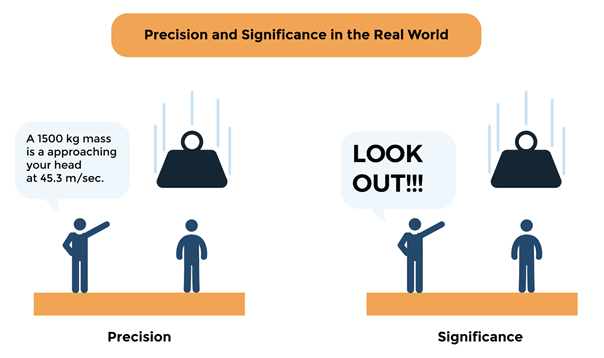
Figure 1.1. Difference between precision and significance. Image modified based on image in Fuzzy Logic Toolbox™ User’s Guide 1
Generalization, Priors, and Bayesian Updating
I’m not sure if anything else pisses me off more than hearing someone say: “You cannot generalize!”. Yeah, right, I will approach every phenomenon in the Universe as unique and genuine. Not sure we have the brainpower for that – that’s why we try to reduce the amount of information by generalizing. There is no science without generalization. That’s why we have generalizations, laws, archetypes, stereotypes.
But intelligent people are not slaves to generalizations – they start with generalizations but quickly update them with new information to improve their insights. For example, one can say that females are generally weaker than males (yeah, sexist generalization), which means two things: (1) average female is weaker than the average male, and (2) randomly selected female will be very likely to be weaker than randomly selected male in the population. Of course, we also need to take into account how much weaker, but without making this a statistic treatise about magnitudes of effects, one cannot claim that all females are weaker than all males. Even if we start with this generalization before working with a new female individual client or athlete and assume generalization is true and we apply it to this individual as well (let’s call this prior belief), we need to update this prior belief with observations and experience while working with this individual, who might be a future or current world-class powerlifter (and probably stronger than 90% of males).
This means that we need to update our prior beliefs (e.g., generalizations or heuristics) with our observations in the process called Bayesian updating to gain insights that will educate our decision-making.
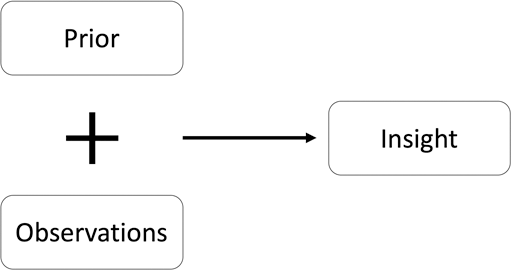
Figure 1.2. Bayesian updating, simplified
This manual is full of generalizations. Hence, you need to look at them as a starting point, which you should update with your own observations, experience, experimentations, and intuition. Just don’t be a dumbfuck and blindly believe and adopt everything that has been written. Again, use it as a starting point (prior).
Large and Small Worlds
The real world is very complex and uncertain. To help in orienting ourselves in it, we create maps and models. These are representations of reality or representations of the real world. In the outstanding statistics book “Statistical Rethinking” (McElreath, 2015), the author uses an analogy, originally coined by Leonard Savage (Savage, 1972; Binmore, 2011; Volz & Gigerenzer, 2012; Gigerenzer, Hertwig & Pachur, 2015), that differentiates between Large World and Small Worlds:
“The small world is the self-contained, logical world of the model. Within the small world, all possibilities are nominated. There are no pure surprises, like the existence of a huge continent between Europe and Asia. Within the small world of the model, it is important to be able to verify the model’s logic, making sure that it performs as expected under favorable assumptions. Bayesian models have some advantages in this regard, as they have reasonable claims to optimality: No alternative model could make better use of the information in the data and support better decisions, assuming the small world is an accurate description of the real world.
The large world is the broader context in which one deploys a model. In the large world, there may be events that were not imagined in the small world. Moreover, the model is always an incomplete representation of the large world and so will make mistakes, even if all kinds of events have been properly nominated. The logical consistency of a model in the small world is no guarantee that it will be optimal in the large world. But it is certainly a warm comfort.” 2
Everything written in this manual represents Small Worlds – self-contained models of assumptions about how things work or should work. Although they are all wrong, some of them are useful 3 (to quote George Box), especially as a starting point in your orientation, experimentation, and deployment to the Large World. It is important to remember the distinction between the two. I embrace integrative pluralism (Mitchell, 2012) in a way that there are multiple models (Page, 2018) that we should use to explain, predict and plan intervention in the Large World.
Different Prediction Errors and Accompanying Costs
Since all models are wrong, but some are useful, we need to make sure they don’t come with harmful errors and potential costs. We can make different types of errors, and they come at different costs. Let’s take a simplistic model of predicting 1RM (one-repetition maximum, or maximal weight one can lift with a proper technique):
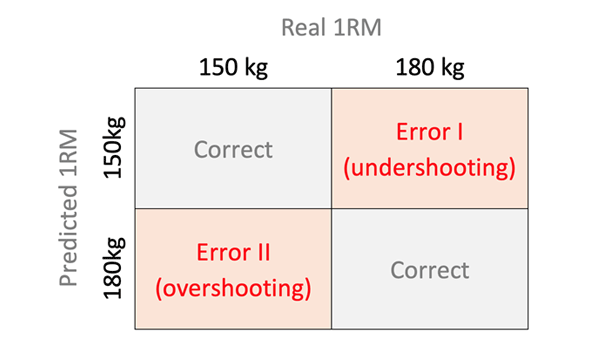
Table 1.1. Different types of prediction error
Table 1.1 represents a common scenario for predicting 1RM. The top row contains two TRUE values (150kg and 180kg) and on the side, we have two predictions. The grey diagonal represents correct predictions, while red diagonal represents erroneous predictions. Type I is undershooting (predicting 150kg when the real value is 180kg), and Type II is overshooting (predicting 180kg when the real value is 150kg). Does making these two error comes with different costs if the predicted 1RM is implemented into the training program? Hell yes!
It must be noted that undershooting a lot is still safer than overshooting a little. This is because when you undershoot, you can still perform training sessions and easily update, while if you overshoot, you will hit the wall quite quickly, and potentially injure someone or create expectation stress and/or heavy soreness. Plus, in my own experience, it is easier to ask for more from an athlete, than less. Furthermore, imagine that your program calls for 3 sets of 5 reps with 100kg, and your athlete feels great and performs 8 reps in the last set instead of the situation where your program calls for 3 sets of 5 with 110kg and the athlete struggles to finish it, or might even need to strip the weights down. Performing better than it has been written in the training program is always motivational (first situation), whereas the opposite can be very discouraging (second situation). Collectively, this approach represents protection from the downside (i.e. injury) which can further allow us to invest in the upside (i.e. strength training adaptation). But more about this in the next chapter.
The problem is that we cannot get rid of errors – we can balance them out by accepting higher Type I error while minimizing Type II error, or vice versa. In this manual I accepted the fact that when making errors (and I do make them), I want them to be Type I errors, or undershooting errors since they come up with much less cost that can easily be fixed through a few training iterations. Because of that, you might notice that some percentages in this manual are quite low. Therefore, I suggest you take a similar philosophy when deciding about percentages and every other guideline in this manual: lean on the side of conservatism and safety first.
Classification, Categorization and Fuzzy Borders
As is the case with generalization, classifications and categorizations (which I consider synonyms here and use interchangeably) are aiming to reduce the number of dimensions and numbers of particular phenomena at hand (with the aim of easier orientation and action). This eventually means that items in one bracket or class might differ, while items from different brackets or classes might be similar. Besides, there are multiple approaches to classifying phenomena that further might have different depths or levels of precision (see Figure 1.3). To paraphrase Jordan B. Peterson: “Categories are constructed in relationship to their functional significance”, meaning there are no objective or unbiased approaches to categorization and classification, and they depend on how we aim to use those categorizations 4 . For example, a powerlifter might classify strength training means, methods, qualities, and objectives differently than an Olympic weightlifter or a soccer player. This is because they experience different phenomena and demand a different forum for action. But if you ask your average lab coat to perform unbiased and objective classification, he or she will usually perform it as a place of things type of classification.
Categorization is not an exercise in futility, but rather helps us make better (more educated and faster decisions (via information reduction and simplification). This simplification has some similarities with heuristics (fast and frugal rules of thumb that help to avoid overfitting in a complex and uncertain world). Hence, categories should have functional significance. In other words, you want to use those categories somehow. Therefore, one should stop categorizing once there is no functional significance.
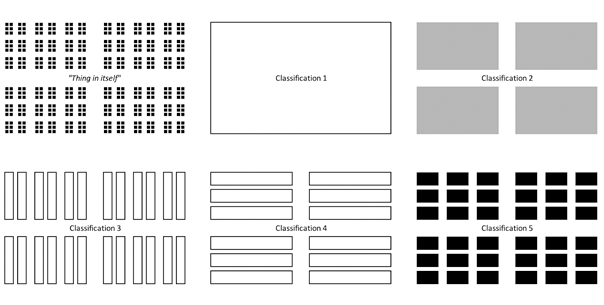
Figure 1.3. There is no bias-free, objective way to classify phenomena. Classification depends on what you plan to use it for 5
That said, categories should be in the highest possible “compression” (lowest resolution) that still conveys enough pragmatic information. Since there are numerous ways to categorize certain items (see Kant’s thing in itself 6), the way we approach categorization and what we see, depends on what we plan using it for (see Figure 1.3). I might be wrong, but this reminds me of both phenomenology 7(things as they manifest to us) and pragmatism 8 (practical application), although they are radically opposed philosophical positions (together with analytic philosophy, which can be considered your average lab coat objective and unbiased approach to classification). It is beyond this manual (and my current knowledge) to discuss these topics, but in my opinion philosophy is very much alive, and it needs to be taken into account especially with the recent rise of scientism 9 in sport science and performance.
Place of Things vs Forum for Action
Classification thus serves a dual purpose: place of things and forum for action. By term place of things, I refer to simply classify phenomena relative to some objective criteria (this is usually physiological, anatomical or biomechanical criteria), or using an analytical approach. On the other hand, the forum for action refers to a classification based on how we intend to use these classes in planning, action, and intervening. In this manual, I am leaning more toward forum for action approach in classifying phenomena, mostly as strength and conditioning coach of team sports athletes, rather than powerlifting or a weightlifting coach. This doesn’t mean that powerlifting and weightlifting coaches cannot use this manual (at the end of the day, we have common physiology, anatomy, psychology, and experience shared phenomena in training), but that they might classify things a bit differently because their forum for action differs than the forum for action of the non-strength-sport athlete.
It is also important that class membership is not a TRUE/FALSE state (although it does simplify things a lot), but rather fuzzy (or continuous) membership. For example, is split squat double leg or single leg movement? For simplicity (Small World model) it is easier to assume it belongs only to one class or category, but in real life (Large World) we know it is not that easy to make a hard border between classes (thus, it can be 60% double leg, and 40% single leg, or what have you). One helpful approach, that helps me at least in minimizing how much I break my own balls over categorization, is to ask “How do I plan using this classification and for whom?”. Also, remember that you do not need to be very precise, but rather meaningful and significant in helping yourself orienting from the forum for action perspective (see Figure 1.1).
Qualities, Ontology, Phenomenology, Complexity, Causality
Most, if not all, coaching education material regarding planning and periodization comes with highly biased classification using objective physiological and biomechanical approaches (place of things; analytical approach (Loland, 1992; Jovanovic, 2018)). These fields have a monopoly on defining ontology (“What exists out there”) of qualities and methods: maximal strength, explosive strength, VO2max, anaerobic capacity, you name it. Some individuals tend to wave around with this scientific method, as something objective and unbiased, but they are just value signaling, because they are using a scientific approach, and you, the little dungeon dweller, are not. But unfortunately, there is no objective or unbiased approach, and you, the dungeon dweller, might engage phenomena classification as you experience it (phenomenology) and you should not be embarrassed about your subjectivity. Yes, you should understand anatomy, physiology and biomechanics, but they should not hold the monopoly over how you classify the phenomena of importance to you. They are necessary, but not sufficient knowledge.
Since these fields define what is real (ontology), it is natural to follow up with an approach that assumes these qualities as the building blocks of periodized training programs. Beyond this, we assume very simplistic causal models (Small World models of what causes what), where we further assume there is some magic training method, or intensity zone, that drives adaptation of the qualities we need to address. For example, we might claim that reps >90% improve maximal strength and that reps with 65% done fast improve explosiveness. This is bullshit. Even worse than this is the Load Velocity curve with associated qualities and intensity zones.

Figure 1.4. An overly simplistic causal model of methods and qualities
Unfortunately, or luckily, things are not that simple. Yes, we can use these as Small World models, representations and heuristics (which they are), rather than the factual state of the world (ontology). First, different individuals will manifest different phenomena and will demand different quality identification as a forum for action. For example, what is holding back a world-class powerlifter in the bench press of 200kg might be lockout strength or bottom strength (and these are phenomenological qualities). Thus, one might approach intervention with these qualities in mind. This will not be the case for your average soccer player since his bench press performance is not the ultimate goal, but rather one aspect of what we might consider important for him (i.e. horizontal pressing). Biomechanically speaking, they are identical (place of things), but phenomenologically, they are very much different, especially in defining the qualities from the forum for action perspective and deciding about intervention to improve them.
Second, assuming there is an associate training method or intensity zone that magically hits identified quality is a pipe dream. The causal network is very complex and at the end of the day, we do need to realize and accept the fact that we are experimenting using a case-by-case approach. There are still useful priors we can rely on (e.g. scientific studies, best practices, old school methods) as a starting point in our experimentation and updating process, but at the end of the day, we are experimenting, and following some Russian lab coat’s program is a warm comfort of certainty assumptions.
Philosophical Stance(s) and Influential Persons
Someone more versed in philosophy than myself currently, can probably put me in certain philosophical stance brackets (i.e. classify me). My current reasoning, besides being complementarist is that of integrative pluralist (Sandra Mitchell; Mitchell, 2002, 2012), pragmatist-realist (Maul, 2013; Guyon, Falissard & Kop, 2017) and phenomenologist. I am highly influenced by works of Robert Pirsig and his Metaphysics of Quality (Pirsig, 1991, 2006), Jordan Peterson (Peterson, 1999; Peterson, Doidge & Van Sciver, 2018), Nassim Taleb (Taleb, 2004, 2010, 2012, 2018), and Gerd Gigerenzer (Gigerenzer, 2015; Gigerenzer, Hertwig & Pachur, 2015). These philosophical stances and personas are highly influential on my approach to training (and life in general) and that will be quite visible in the chapters to come. For that reason, I find it important to pinpoint to the sources. I do think, especially with the recent rise of scientism (Boudry & Pigliucci, 2017), particularly in our domain of sport performance and science, that philosophy is more than needed. This introductory chapter and the following on the Agile Periodization are very much philosophical and are covering mine philosophical stances.
What is covered in this manual?
It was important to vent the above out before presenting the rest of the material. I take the percent-based approach to strength training since I find it a great prior for being implemented concurrently with any other approach (velocity based, RPE based approach, open sets and so forth), and because it can give a ballpark of where weights should be. When I was working with soccer athletes, I first tried to implement open sets (only prescribing reps) and to teach them how to fish by allowing them to progress and select weights themselves by keeping a training log (which was usually forgotten or slipped under treadmill). This failed miserably, since they didn’t give many fucks regarding strength training. They wanted to get it done and play rondo. Therefore, I decided to calculate the weights and the number of repetitions they needed to lift. You know – being a Hitler and master of puppets. However, after that, I realized how all these formulas and tables differ for a given individual, exercise, on a daily basis.
I needed something that is prescriptive enough to avoid fuckarounditis (“Tell me how much I need to be lifting” and to make sure progressive overload happens over time), but also flexible enough to take into account errors and uncertainties, individual differences, and rates of improvement. That is how this manual was born.
This manual starts with chapter 2 on Agile Periodization (Jovanovic, 2018), which provides a rough outline of the concept, particularly iterative planning component, and how it is applied to strength training planning, objectives classification, and goals setting. Chapter 3 discusses strength training movements classification, as well as the ratios between their maximum (which can be quite useful in estimating max for novel exercise, at least until one gains more observations regarding the exercise in question and update this model). Chapter 4 discusses 1RM estimation (particularly estimation through iteration idea), rep max tables and how they can be useful. Chapter 5 discusses the planning of the strength training phase and set and rep schemes. Chapter 6 covers the review and retrospective of the strength phase (which I titled Rinse and Repeat). Appendices consist of Chapters 7-9 that enlist full list of exercises and set and rep schemes.
As already stated, the objective of this strength training manual is not to go into theoretical nitty-gritty details, but to provide all the useful tables, formulas and heuristics at one place.
Footnotes
- 1Available at https://www.mathworks.com/help/pdf_doc/fuzzy/fuzzy.pdf
- 2Excerpt taken from “Statistical Rethinking” (McElreath, 2015), page 19
- 3“All models are wrong, but some are useful” is aphorism that is generally attributed to the statistician George Box. Nassim Nicholas Taleb expanded this aphorism to “All models are wrong, many are useful, some are deadly”
- 4Also check essentialism versus nominalism, realism versus instrumentalism/constructivism and how they are integrated with pragmatist-realist position (Borsboom, Mellenbergh & van Heerden, 2003; Guyon, Falissard & Kop, 2017)
- 5Thing-in-itself: “What do you see? Depends on what do you want to use it for”. Modified based on the image from Maps of Meaning 5: Story and Meta-story course by Jordan B. Peterson, available on YouTube (from 43:59): https://youtu.be/RudKmwzDpNY?t=43m59s
- 6From Wikipedia: “The thing-in-itself (German: Ding an sich) is a concept introduced by Immanuel Kant. Things-in-themselves would be objects as they are, independent of observation”
- 7From Stanford Encyclopedia of Philosophy: “Literally, phenomenology is the study of “phenomena”: appearances of things, or things as they appear in our experience, or the ways we experience things. Thus the meanings things have in our experience. Phenomenology studies conscious experience as experienced from the subjective or first-person point of view.”
- 8From Stanford Encyclopedia of Philosophy: “Pragmatism is a philosophical tradition that – very broadly – understands knowing the world as inseparable from agency within it.”
- 9Belief or stance that all things can be reduced to science (Boudry & Pigliucci, 2017)
- 10From Wikipedia: “Ontology is the philosophical study of being. More broadly, it studies concepts that directly relate to being, in particular becoming, existence, reality, and the basic categories of being and their relations. Traditionally listed as a part of the major branch of philosophy known as metaphysics, ontology often deals with questions concerning what entities exist or may be said to exist and how such entities may be grouped, related within a hierarchy, and subdivided according to similarities and differences.”
- 11Complementary Training is the name of my blog (www.complementarytraining.com) that I started in 2010, with the aim of reconciling opposing concepts in training using the complementary approach (Kelso & Engstrøm, 2008).
- 12You will probably read the word Quaility numerous times in this manual
References
- Binmore K. 2011. Rational Decisions. Princeton, NJ: Princeton University Press.
- Borsboom D, Mellenbergh GJ, van Heerden J. 2003. The theoretical status of latent variables. Psychological Review 110:203–219. DOI: 10.1037/0033-295X.110.2.203.
- Boudry M, Pigliucci M (eds.). 2017. Science unlimited? the challenges of scientism. Chicago: The University of Chicago Press.
- Gigerenzer G. 2015. Risk Savvy: How to Make Good Decisions. Penguin Books.
- Gigerenzer G, Hertwig R, Pachur T. 2015. Heuristics: The Foundations of Adaptive Behavior. Oxford University Press.
- Guyon H, Falissard B, Kop J-L. 2017. Modeling Psychological Attributes in Psychology – An Epistemological Discussion: Network Analysis vs. Latent Variables. Frontiers in Psychology 8. DOI: 10.3389/fpsyg.2017.00798.
- Jovanovic M. 2018. HIIT High Intensity Interval Training and Agile Periodization. Ultimate Athlete Concepts.
- Kelso JAS, Engstrøm DA. 2008. The complementary nature. Cambridge, Mass.: MIT.
- Loland S. 1992. The Mechanics and Meaning of Alpine Skiing: Methodological and Epistemological Notes on the Study of Sport Technique. Journal of the Philosophy of Sport 19:55–77. DOI: 10.1080/00948705.1992.9714495.
- Maul A. 2013. On the ontology of psychological attributes. Theory & Psychology 23:752–769. DOI: 10.1177/0959354313506273.
- McElreath R. 2015. Statistical Rethinking: A Bayesian Course with Examples in R and Stan. Boca Raton: Chapman and Hall/CRC.
- Mitchell SD. 2002. Integrative Pluralism. Biology & Philosophy 17:55–70. DOI: 10.1023/A:1012990030867.
- Mitchell S. 2012. Unsimple truths: science, complexity, and policy. Chicago, Mich.: The Univ. of Chicago Press.
- Page SE. 2018. The Model Thinker: What You Need to Know to Make Data Work for You. Basic Books.
- Peterson JB. 1999. Maps of meaning: the architecture of belief. New York: Routledge.
- Peterson JB, Doidge N, Van Sciver E. 2018. 12 rules for life: an antidote to chaos. Toronto: Random House Canada.
- Pirsig RM. 1991. Lila. New York, NY: Bantam Books.
- Pirsig RM. 2006. Zen and the art of motorcycle maintenance: an inquiry into values. New York: HarperTorch.
- Sandra Mitchell.Why integrative pluralism?* – Emergence: Complexity and Organization. Available at https://journal.emergentpublications.com/article/why-integrative-pluralism/ (accessed March 21, 2019).
- Savage LJ. 1972. The Foundations of Statistics. New York: Dover Publications.
- Taleb NN. 2004. Fooled by randomness: the hidden role of chance in life and in the markets. New York: Thomson/Texere.
- Taleb NN. 2010. The black swan: the impact of the highly improbable. New York: Random House Trade Paperbacks.
- Taleb NN. 2012. Antifragile: Things That Gain from Disorder. New York: Random House.
- Taleb NN. 2018. Skin in the game: hidden asymmetries in daily life. New York: Random House.
- Volz KG, Gigerenzer G. 2012. Cognitive processes in decisions under risk are not the same as in decisions under uncertainty. Frontiers in neuroscience 6. DOI: 10.3389/fnins.2012.00105.

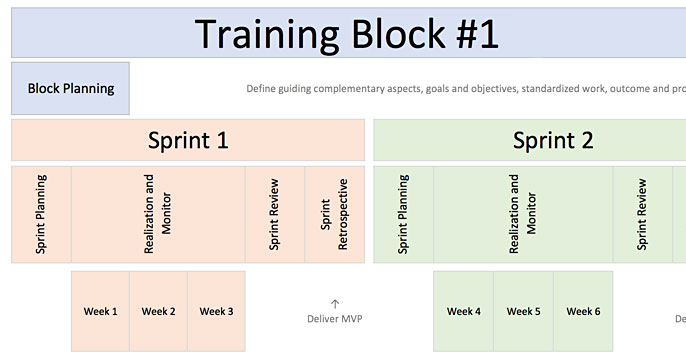









Responses